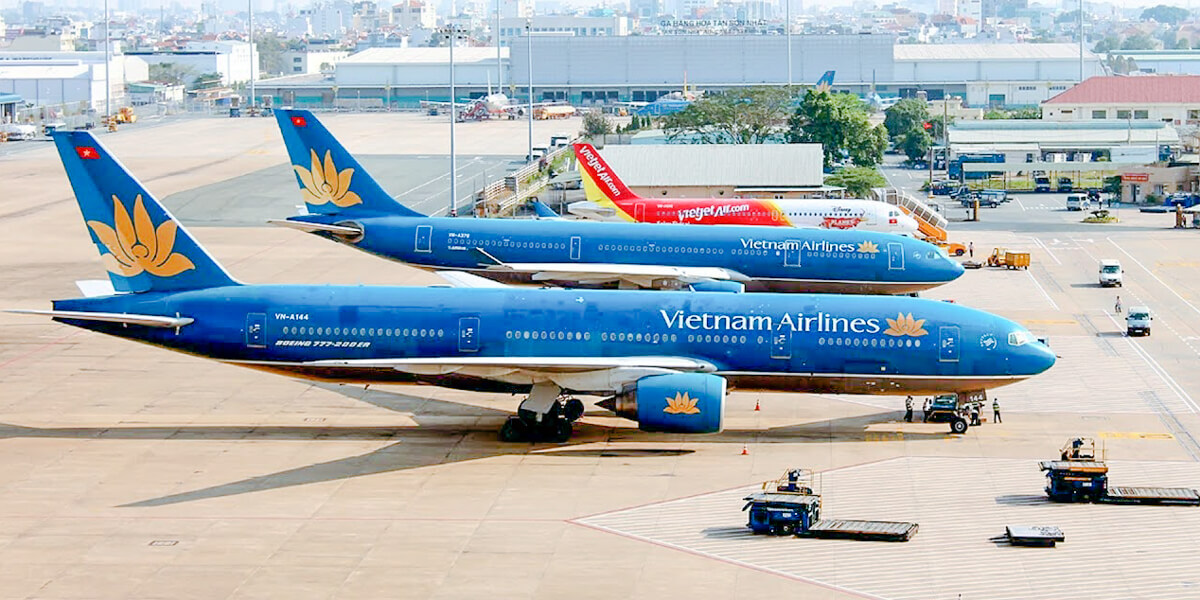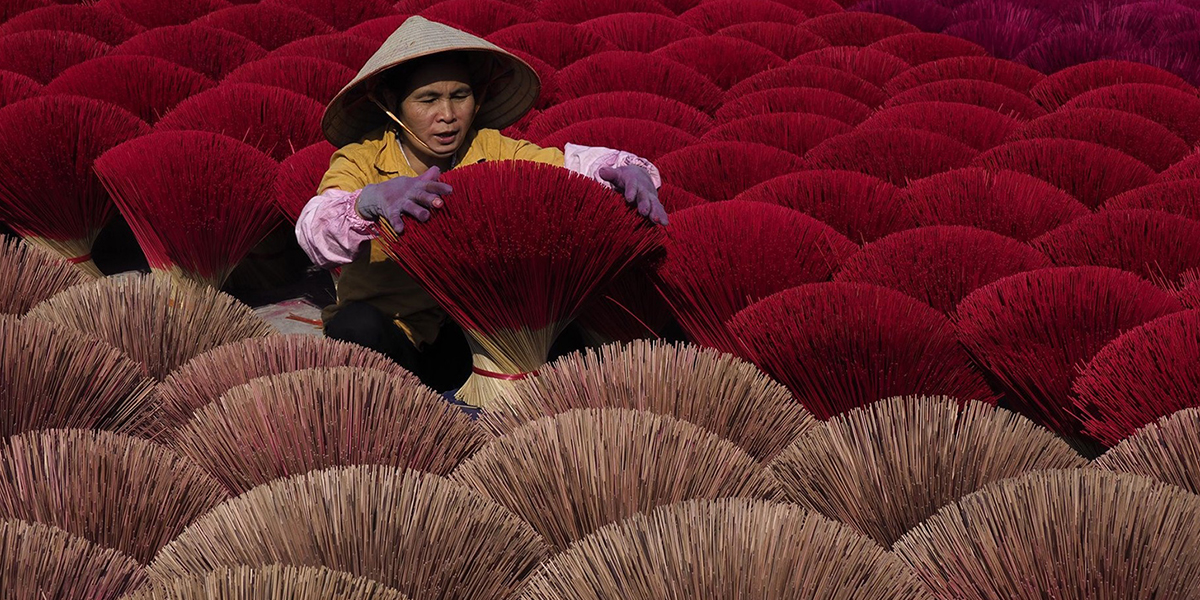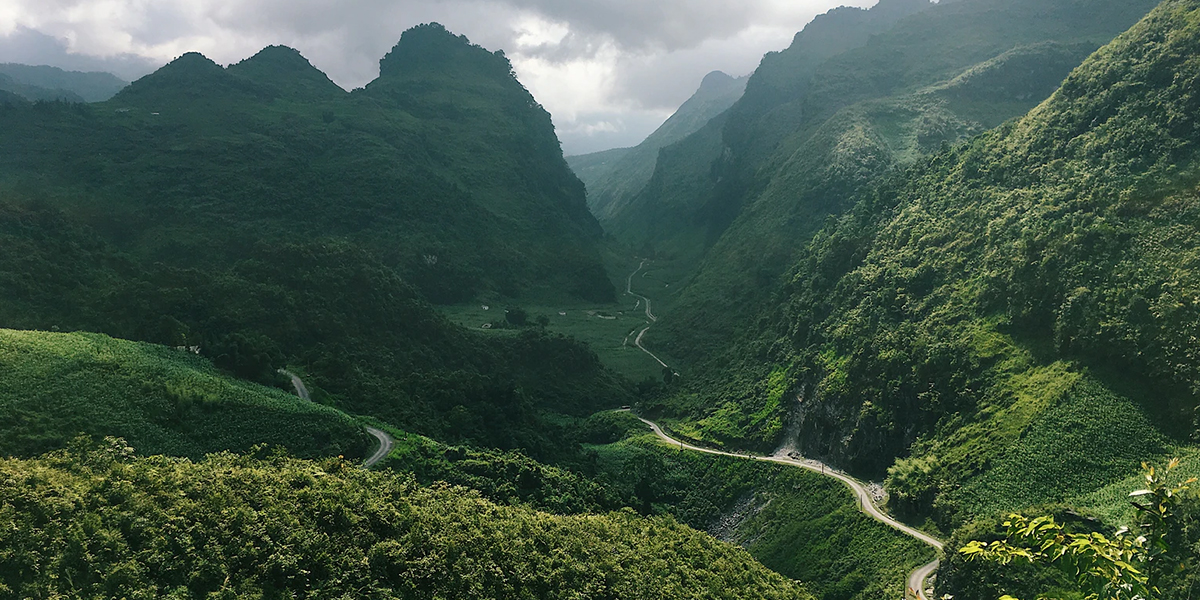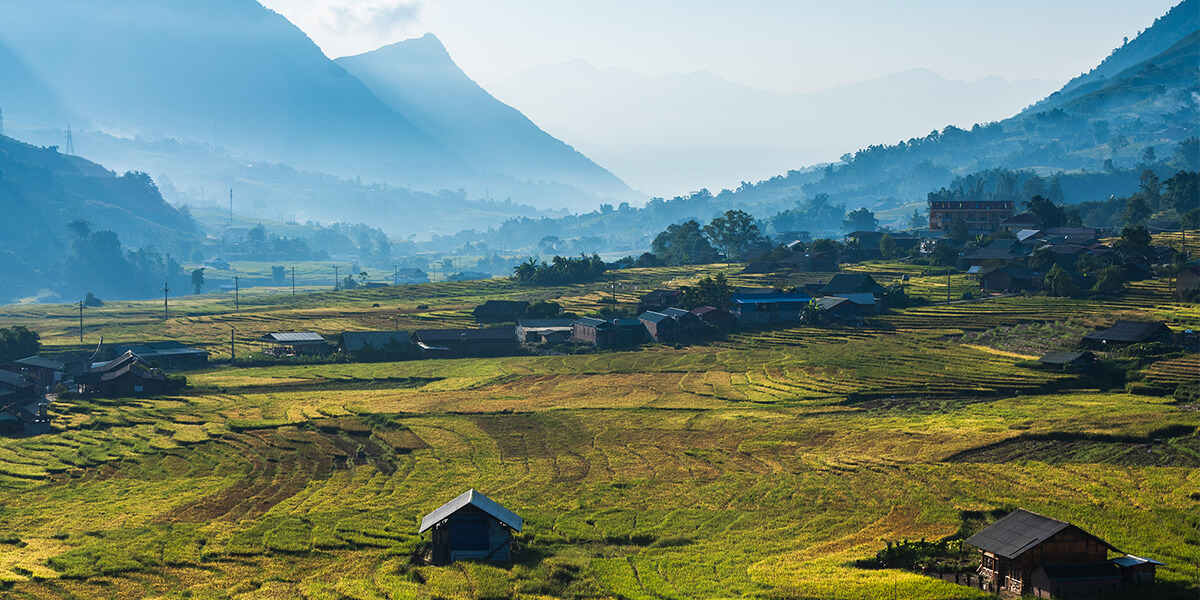Hanoi has been the capital of Vietnam since ancient times, from feudal dynasties, through wartime, and even to the present. This is home to many historical monuments, most notably the citadel of Thang Long, one of the largest relic sites in Vietnam. It is like a collection of books, recording the entire history of more than 10 centuries of Hanoi and Vietnam. Below is detailed information about this construction:
I - Thousand-year history of the Imperial Citadel of Thang Long

The reconstruction photo of Thang Long Citadel - Source: vietnamnet
After ascending the throne in 1010, King Ly Thai To - the first King of the Ly dynasty made a historic decision to move the capital from Hoa Lu (now the relic of Hoa Lu ancient capital in Hoa Lu District, Ninh Binh Province), to Dai La (old name of Hanoi). Thang Long Imperial Citadel was then quickly built and completed 1 year later, including 3 parts that overlap each other like concentric circles. The outermost ring called La Thanh (La Citadel) was the place where the locals lived, while the middle was the Imperial Citadel - the main royal court, living and working place of the mandarins. The smallest innermost citadel was the Forbidden City, reserved only for kings, queens, and a few concubines.
The Imperial Citadel of Thang Long complex has undergone many renovations, new constructions, and expansions under the Tran, Le, Mac, and Nguyen dynasties. After Emperor Quang Trung moved the capital to Phu Xuan (nowadays Hue City) in 1789, works and items in Thang Long Citadel were gradually demolished and relocated. In 1805, King Gia Long reduced the old wall of the Hanoi Old Citadel to ruins, then built a much smaller citadel in the French Vauban style. In the 20th century, the French invaded and chose this place as the capital of the Indochina Federation, then destroyed the Hanoi citadel to build offices and barracks.
After the Vietnamese army liberated the capital in 1954, it became the headquarters of the Ministry of National Defense of Vietnam. For more than 1000 years, the citadel of Thang Long was heavily damaged by time and war and suffered many attacks and bombing raids. Currently, most of the architecture has been restored and preserved in the old ruins, with an archaeological site continuing to be excavated.
II - Where is the Imperial Citadel of Thang Long now?

The tree-lined Hoang Dieu Street - Source: triptrip
With a total area of about 18,395ha, Thang Long Imperial Citadel is located in Dien Ban Ward, Ba Dinh District, with the entry point at no.19C on Hoang Dieu Street. This massive relic site is not far from famous attractions of Hanoi such as the Ba Dinh Complex (500m), including Ho Chi Minh Mausoleum, Ho Chi Minh Museum, and One Pillar Pagoda,… Thang Long Citadel is also only about 1km from the central area of Hanoi, convenient for you to visit the Hanoi Old Quarter, Hoan Kiem Lake, Hanoi Night Market,...
You can go by personal vehicle and park for free at the entrance area (no.19C Hoang Dieu Street), but if you want to sightsee on the way to the Imperial Citadel of Thang Long, a bus is a perfect choice for you. The fastest and most convenient routes are 22, 33, 45, and 50, with an average of 45 - 60 minutes/trip operating from 5am - 9pm and the price is 7,000 VND / ticket ($0.3). There are also double-decker buses or Hanoi hop-on-hop-off buses, passing through streets and stopping at Hanoi attractions including the Thang Long Imperial Citadel. Service frequency is 30 minutes/trip starting from 9am to 6:10pm with fares of:
- 2 hours: 196,000 VND / ticket ($8.55)
- 4 hours: 300,000 VND / ticket ($13.1)
- 24 hours: 450,000 VND / ticket ($19.64)
- 48 hours: 650,000 VND / ticket ($28.36)
Some other information about the Citadel of Thang Long that you need to know before visiting:
- The Imperial Citadel of Thang Long entrance fee: 30,000 VND / person ($1.3), purchased at the entrance
- Opening hours: 8am - 5pm, closed on Mondays
- Contact: 024 373 45 427
- Website: https://www.hoangthanhthanglong.vn
III - Remnants of the Thang Long Citadel
Currently, there are outstanding relics remaining in the central area of Thang Long Citadel, including Doan Mon Gate (South Gate), Kinh Thien Palace (Heaven Palace), D67 house and basement, Hau Lau Pavilion (Back Tower), Bac Mon Gate (North Gate) and Hanoi Flag Tower. All these destinations are located in a straight line, so it is very convenient for you to visit them all in one trip. In addition, you can also visit the archaeological site of 18 Hoang Dieu located on the opposite street, the system of walls and gate architecture of the Nguyen Dynasty, French architectural works, and so on.
1 - Doan Mon Gate - the main gate to the Imperial Citadel of Thang Long
As the southern gate of the Thang Long Imperial Citadel, Doan Mon is the main entrance to the Forbidden City, where Kinh Thien Palace and other palaces of the kings are located. The entrance has existed since the Ly dynasty (11th century), but the current architecture belongs to the early-Le Dynasty (15th century), later repaired under the Nguyen Dynasty (19th century). Doan Mon Gate in Thang Long Citadel is still relatively intact, consisting of 5 doors with the main architecture in the style of rolling arches. The largest middle one is reserved for the King, while 4 smaller doors on the sides are for the mandarins and royal princes who visit.

Doan Mon Gate in the Imperial Citadel of Thang Long - Source: bietthungoctrai
Between Doan Mon Gate and Kinh Thien Palace is the Long Tri area, a space with very important historical significance - where sacred political and religious ceremonies were held. In 2002, Vietnamese archaeologists dug inside Doan Mon and found the “ancient carriageway” of the Tran dynasty (13th century), built by reusing many bricks dated back to the Ly dynasty. Continuing to excavate, they also found the road from Doan Mon to Kinh Thien Palace in the north and the southwest gate of Hanoi. This further strengthens the hypothesis that the North Gate was basically located at the same location in the Ly, Tran, and early-Le dynasties.
2 - Kinh Thien Palace in Thang Long Imperial Citadel

Kinh Thien Palace - Source: baotintuc
Located in the center of the Imperial Citadel of Thang Long, Kinh Thien Palace was built in 1428. This place was originally the location of Nung mountain, which is considered the center of sacred air in the country according to the traditional feng shui concept. In 1886, the palace was demolished by the French colonialists to build the French Army’s Artillery Command, so now only traces of the foundation remain, along with two steps and stone railings carved with dragons from the 15th century.
The dragon stair consists of a total of 9 stone steps and with 3 ways, of which the main entrance is for the King to go and the other two sides are for the courtiers. The highlights of the Imperial Citadel of Thang Long and Kinh Thien Palace are 4 stone dragons in front of the palace, sculpted during the reign of King Le Thanh Tong (1442 - 1497), representing the architectural style of the early-Le Dynasty. They are carved of blue stone, with gently winding bodies and large heads, long branched horns. These are extremely precious artifacts, symbolizing the intense and lasting vitality of Vietnamese national culture.
3 - House D67 - a new work in Thang Long Citadel

Tunnel in house D67 - Source: redsvn
As its name suggests, House D67 and basement architecture were built in 1967, located in area A of the Thang Long Imperial Citadel. House D67 in the Imperial Citadel of Thang Long is a historical relic from the resistance war against the US, marking the important decisions in the Vietnamese revolution, made by the Ministry of National Defense, the Politburo, and the Central Military Commission. Those were the Tet Offensive in 1968, and the Ho Chi Minh campaign in 1975,...
Meanwhile, the D67 tunnel is located under the courtyard connecting Kinh Thien Palace and D67 house, with the ways originating from two offices of the generals. The entrances and exits have up to six blue painted steel doors 12cm thick, with many handles and a system of rubber gaskets that can prevent water and toxic glasses. The entire underground system is connected with generator lines, and to this day, many wartime telephones are still preserved.
4 - Hau Lau Pavilion in the Imperial Citadel of Thang Long

Hau Lau Pavilion - Source: bietthungoctrai
Located behind Kinh Thien Palace, Hau Lau Pavilion was built in 1821, also known as Cong Chua Pavilion (Princess Pavilion) or Lady Pavilion. This was originally built for worshiping and feng shui and then used as a staying place for the consorts and concubines in the escort of the Nguyen Kings. At the end of the 19th century, the building was badly damaged and destroyed, so the French colonialists had to renovate and rebuild it as it is today.
5 - Bac Mon Gate - the north gate of Thang Long Imperial Citadel
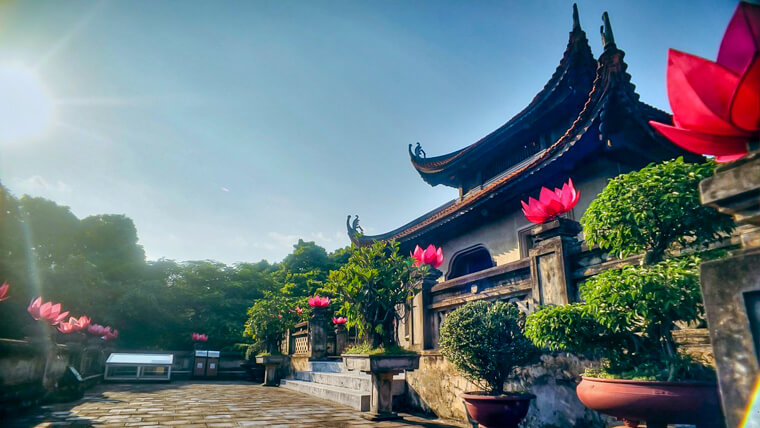
Bac Mon Gate - Source: redsvn
Bac Mon Gate was built in 1805 of brick, consisting of two floors, eight roofs, a stone archway, and a traditional curved top. This is the only remaining among the 5 gates of the Imperial Citadel of Thang Long, preserved by the French because on it are the vestiges of two French cannons fired from the Red River in 1882.
In 1999, archaeologists discovered the remains of a wall and of another structure from the early-Le Dynasty here. The gate is now the place to worship two former governors of Hanoi - Nguyen Tri Phuong and Hoang Dieu, who sacrificed themselves to protect the Citadel in the 19th century
6 - Archaeological site at no.18 Hoang Dieu
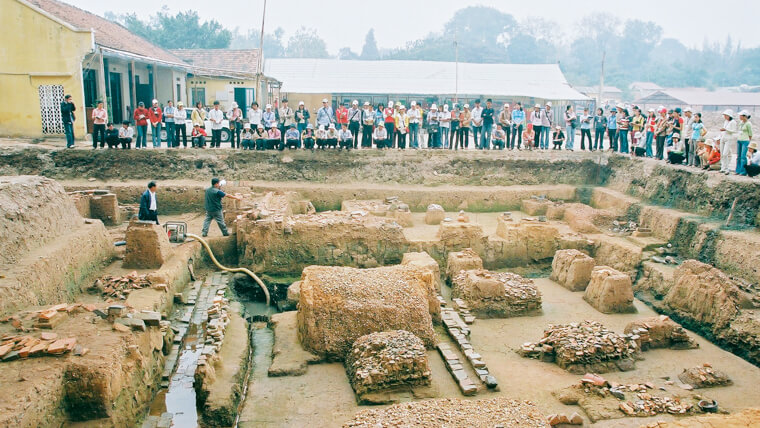
The archaeological site with many valuable artifacts - Source: khoahocphattrien
About 100m from Kinh Thien Palace to the West, this archaeological relic was excavated in December 2002, having a total area of 4,530ha divided into 4 zones. Archaeologists have discovered here many valuable artifacts, and traces of the foundations of architectural works belonging to the Imperial Citadel of Thang Long. They include decorations with hundreds of different patterns, made of terracotta, wood, ceramics dating from the 7th to 19th centuries, foreign utensils, items, and porcelain from West Asia, China, Japan…
A particularly interesting feature is that the monuments are stacked on top of each other quite continuously, corresponding to the dynasties from the 10th century to the 19th century. This is considered the first, largest, and most valuable work found in this area so far, the clearest proof of the magnificence of Thang Long Imperial Citadel in the past.
7 - Hanoi flag tower

This is one of the well-preserved sites in the Imperial Citadel of Thang Long - Source: tienphong
Built-in 1812, this relic has Vauban style and a height of 33m including the base, body, and watchtower. The square base consists of 3 gradually smaller levels, each with 18 stair steps going up. The body of the flagpole is a tapered cylinder with 8 sides, inside are 54 stairs illuminated by 39 asterisk-shaped windows and 6 fan-shaped windows. The top of the flagpole is an octagonal floor with 8 windows, one on each side; in the middle is a round pillar for the flagpole, and above is a red flag with a yellow star.
Thang Long Citadel is one of the most prominent indicators of the long history and rich culture of Vietnam, marking many important historical events. Currently, there are many interesting tourism development activities here, typically a night discovery tour with various performances combining modern technology. If you have the opportunity to travel to Hanoi, you should not miss visiting the Imperial Citadel of Thang Long to understand more about the history of this country.







.jpg) — Ha Bich
— Ha Bich
